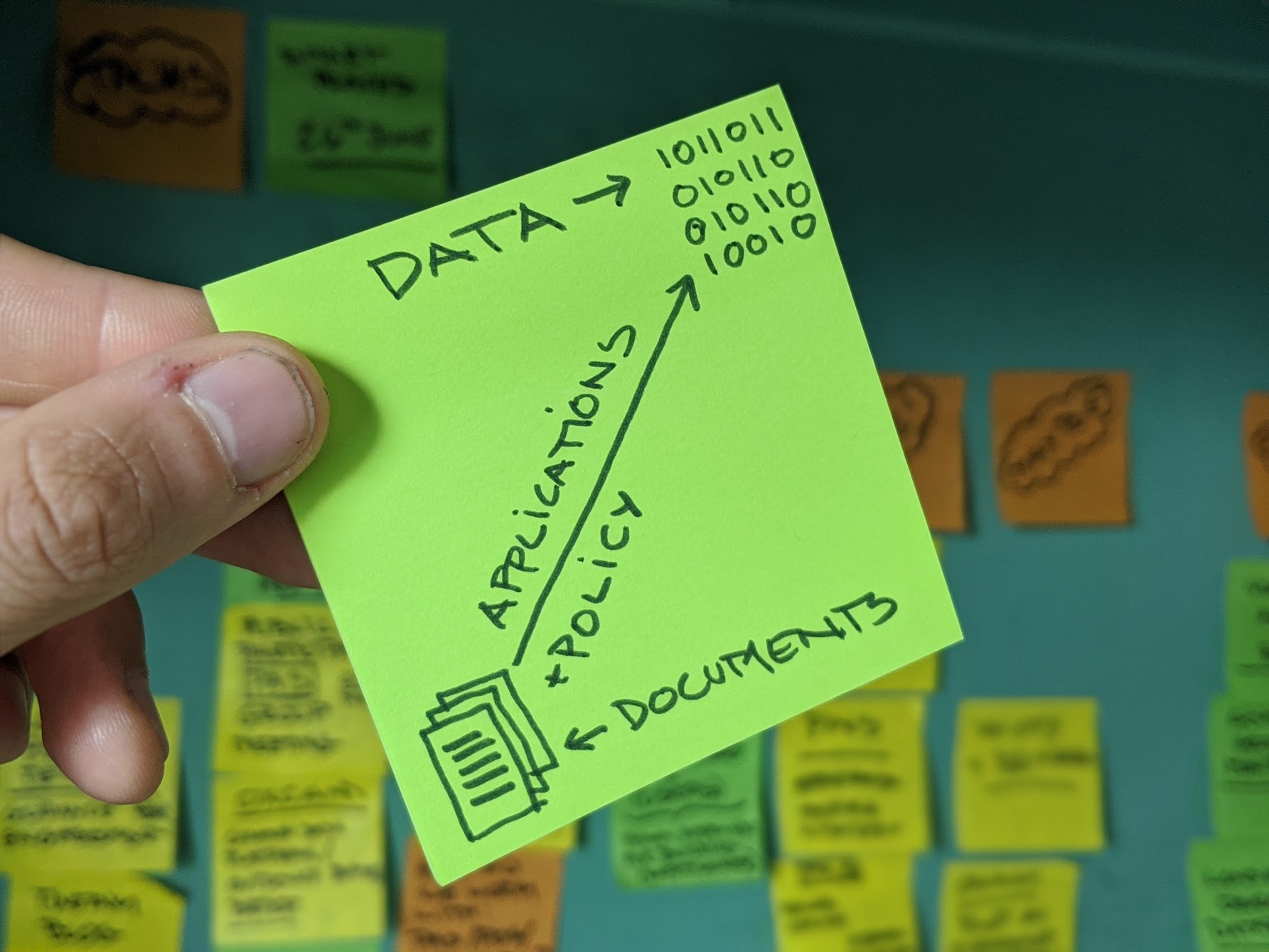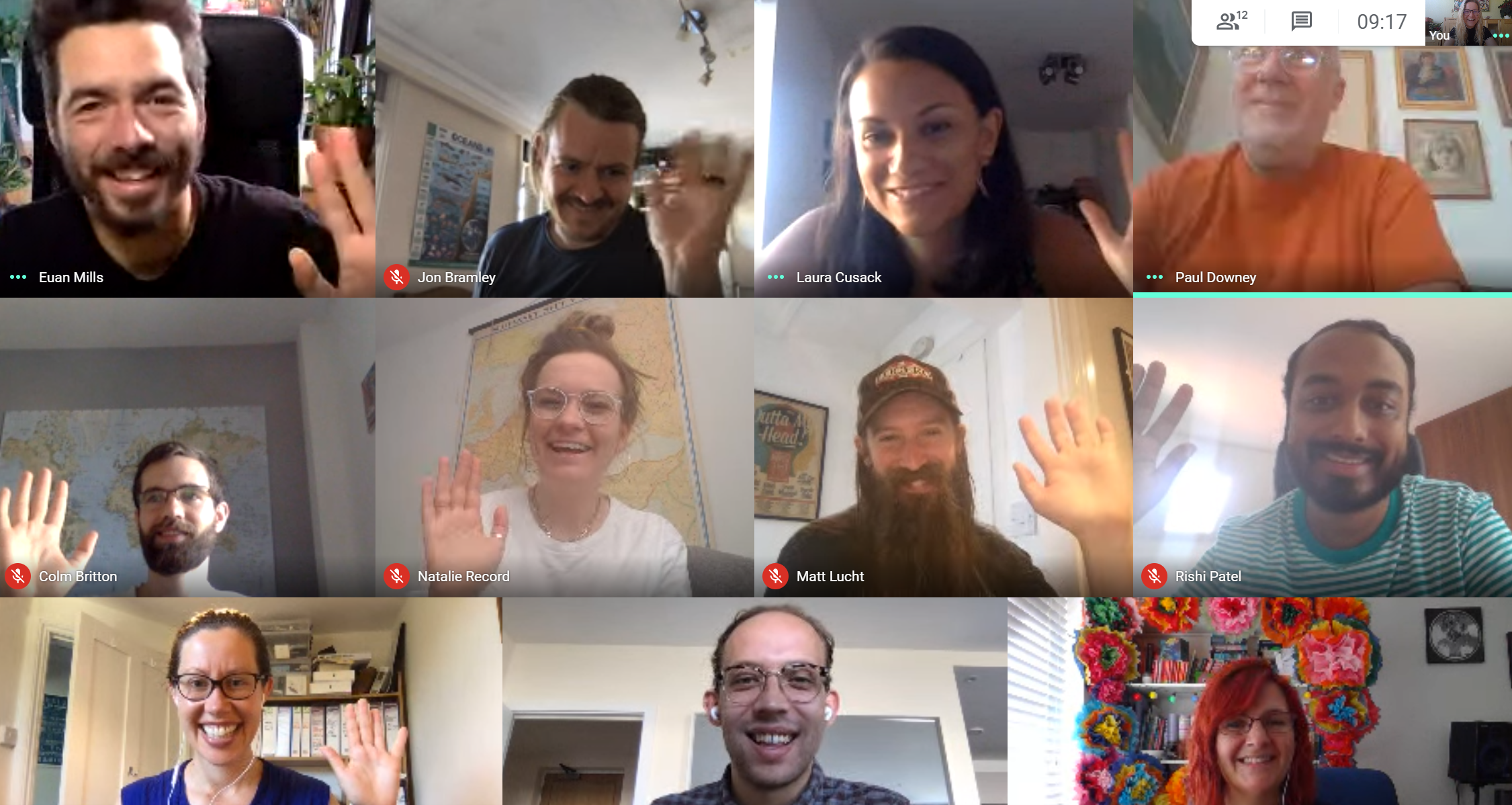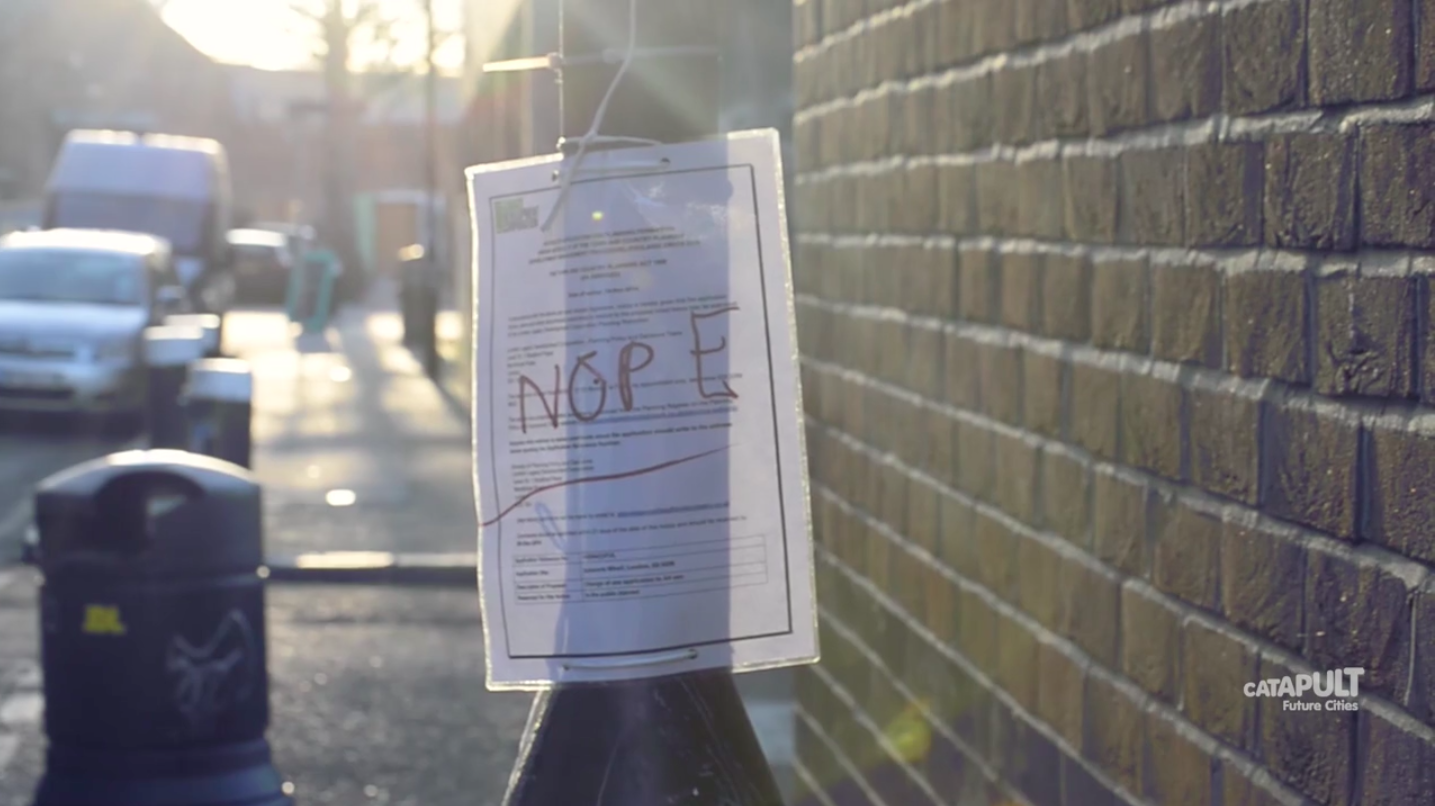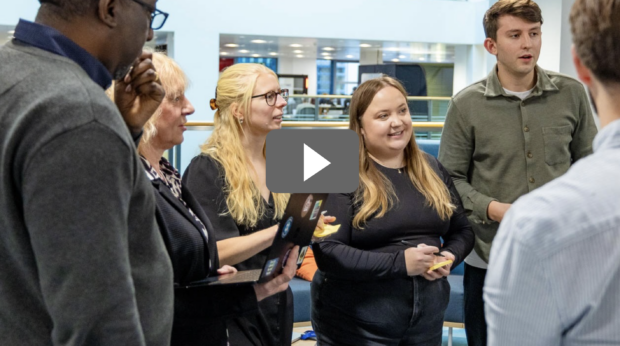
Hello, I’m Euan and I joined MHCLG Digital last week. It’s a strange time to join any organisation, but I'm feeling surprisingly at home so far (no pun intended). I thought given the circumstance, it would be useful to write a post to introduce myself and give some first impressions on my first week.
Digital transformation of the planning system
I’ve spent the majority of my 20-year career working in the built environment sector. I’ve worked as an architect on the design of housing, as an urban designer on masterplans and regenerations strategies, and as a planner writing policy and negotiating with most of the major architects and developers working in the UK today. What I found most frustrating in this time, was how little the built environment sector used data to make decisions that would impact people for decades to come.
When I joined Future Cities Catapult 4 years ago, I was given the chance to test out some ideas around how digital technology could lead to more evidence-based decision making in cities. This is where I started to get excited about the digital transformation of the planning system, and is what I’m so looking forward to working on here.
My experience this week has confirmed what I was hoping for. Not only that the Digital Land team is super talented and friendly, but that they work by getting their hands dirty and trying things out. It’s very easy to talk about visions of how things should be, but once you start building and testing things, that's when you really start to move things forward.

Transforming planning notices
At the beginning of the week I spent some time with Natalie and Rishi. We worked up some ideas on providing guidance for local authorities to create digital planning notices. Tatty paper planning notices, tied to lampposts, have become the symbol for the failings of the planning system. Dan Hill described them as “the lonely, silent messengers of a planning system that is also effectively invisible” in a post back in 2015.
This week the department is temporarily removing legislation that requires planning notices to be physically displayed. This is a great change, and given that people already feel alienated from the planning system, it’s important we continue to find new and better ways to help people participate in shaping their neighbourhoods.
I’m looking forward to learning how these changes in legislation happen, and how new policy is developed. These are some of the ways we can help local authorities adopt new ways of doing things.

Transforming Local Plans
I’ve also spent time getting on board with the Local Plans alpha which dxw are working on with us. What is most exciting with the work so far is that it starts the process of transforming Local Plans (usually out of date, unwieldy PDF documents) into something more in-keeping with the internet age. The dxw team are publishing weeknotes about the project.
A few months ago I wrote a column for Planning Magazine on what digital Local Plans could be like in the future, and this project is actually making it real! The project is getting to the level of detail of designing schemas, not only for some high level information about Local Plans, such as their location and dates, but for the actual policies inside the plan. I’m hoping at some point in the future, some of these policies might even be made machine readable, so we can get closer to screening applications as they are submitted.
Back office planning system
In the next few weeks I'm looking forward to joining discussions on our back office planning system beta prototype with Egle in the Local Digital team. Planning back office software has many issues, ranging from dissatisfied users, to customer lock-ins - all typical of a market that is only served by a handful of suppliers.
Just before I left the Catapult, we published a piece of research which critiques the current state of the market and highlights how a next generation of software is desperately needed.
What makes this project particularly exciting to me is that it creates the infrastructure for us to start treating planning applications as data, rather than documents. The challenge, once we have a few of these systems live, will be to find a way to scale them across other local authorities.
Data, prototypes, policy and market making
This is only my first week, but first impressions are that the work we do falls into 4 areas; data, prototypes, policy and market making. Each of these layers work as a force multiplier for the other. For example, learnings from the Plan X prototype, can feed into the Local Plans data schema , which can be implemented through policy guidance, which can help SMEs like Land Insight and Urban Intelligence reach a wider market. This approach seems to be really effective, attacking the problem from every angle.
Where we need to do more is to set out to others outside the department more clearly what the overall vision for what we’re trying to achieve in the long term is. I’m hoping the upcoming Planning White Paper will give us the opportunity to do this, and might even help us create a roadmap, and better understand where and how to focus our efforts next.
On a personal level, my mission is to use digital to create a more transparent, inclusive and responsive planning system, which the team is already well on the way to achieving!
Subscribe to the MHCLG Digital blog to find out more about our work, and visit the Digital Land team’s website for details about their projects.



22 comments
Comment by Michael Edwards posted on
1. Thanks. Fascinating. I'm active in JustSpace.org.uk and very much concerned with making planning more transparent, not less - see our current concerns about how some LPAs are using Covid19 special powers to by-pass public concerns. We and other bodies have written to SoS about this.
2. In a personal capacity our neighbour made a failed application for a development 5 m from our boundary, has resubmitted. Neither time were we notified and we only discovered by seeing a SITE NOTICE 500 m away by chance while on a self-isolating walk. Dodgy to remove these notices before you have software to contact neighbours etc.
Good luck with the whole project.
Comment by John posted on
You should have been notified by letter, if you were the adjoining neighbour. This is a statutory requirement, but the display of a site notice is not. However if the application was for a Certificate of Lawfulness there is no requirement for affected parties to be notified.
Comment by Michael Edwards posted on
Thanks. I'll complain to the council.
Comment by euanmills posted on
Thank you Michael, and thanks for all your contribution to the world of planning to date too.
Comment by Peter Stockton posted on
Bit of an unwarranted attack against site notices which must surely still be the cheapest and most effective way to draw attention to a locality ? A new development proposal is likely to be of most interest to the people who actually use the site or pass by it frequently?
I note that even BT, who you might imagine are at the leading edge of digital data, use site notices to inform people about their proposals! Since no effective alternative is offered I imagine site notices will continue to be used for some time yet. I would suggest they are also an effective way to draw attention to potential allocated sites in local plans. Using water proof paper makes a big difference!
Comment by Rosie Pearson posted on
Great to see the digitalisation of Local Plans. The user group missing from your list is communities/action groups.
Having spent five years analysing reams of evidence for Local Plans, i agree that digitalisation is essential. Can I volunteer to road test any of the proposals from a community perspective? I have many ideas of how the system could work better. Better engagement = better plans, faster....
I hope to hear from you. Thank you
Comment by euanmills posted on
Hi, thanks for your comment. We’re not looking for anyone to test things at this stage, but thanks for your offer.
Comment by Rosie Pearson posted on
Thank you for the reply. May I ask how you will ensure that community groups/communities in general are factored in to any changes given that they do not feature as a stakeholder group. It should be a fourth category. Worrying if we are ignored as it means opportunities may be missed to make the system better. Better engagement, better plan, faster plan. Thank you
Comment by Michael Edwards posted on
I do strongly agree. A lot of community groups (including Amenity Societies which typically have more leisured retired members ??) do a load of work watching & digesting the flow of inscrutable PDFs and officer reports on council sites and distilling 1-page descriptions and assessments for local activists etc. It's hard work but incredibly useful. I was on a good such group for years - King's Cross Development Forum and its secretary would be a superb tester for any reformed system.
Comment by Sue posted on
Hi Euan - great post! As you know I'm really interested in making the regulatory framework stretch to accommodate all things digital; in particular 'baking in' digital impacts and benefits to the planning application process. Would be great to discuss this with you and the team if you ever have the time
Comment by euanmills posted on
Hi Sue, thanks for your comments and for helping champion a more digital planning system.
Comment by Ian Stronge posted on
Glad to see you acknowledge public alienation, and you mention 'inclusive' - but just once!
Please blog next about making planning inclusive.
BTW Removing paper notices from lamp posts won't help.
Comment by euanmills posted on
Thanks for your comment. We believe a more digital system will make it easier for people to engage and understand the planning system.
Comment by kenneth davis posted on
If digitisation can take personal i.e taste preferences out of planning decisions then (as an architect/planner with 45 years experience) I am all for it. I have had appalling experience of plannners making completely absurd decisions based on some undefined ideas on what constitutes good design, In reality these days we should be looking first at how sustainable schemes are and that includes the quality of external i.e visible by the public, materials. Such matters as height and mass may be important in some areas so can be put in policy but can also be easily digitally measured against that policy. Let's get personal taste out of the planning system.
Comment by euanmills posted on
Yes, we hope digitisation can make planning more objective and consistent, thanks for reading the blog.
Comment by ken davis posted on
Great, am looking forward to how it all progresses.
Comment by ian stronge posted on
Dear Euan,
Thank you for responding to each comment here.
Can I suggest you blog again when you and the team have developed your belief in "inclusion" into something practical?
"We’re not looking for anyone to test things at this stage..."
From all your earlier experience, I'm sure you'd agree that involving people before the team is "ready" is exactly what helps to avoid pitfalls and deliver better results.
I hope to read your next bulletin soon!
Good luck!
Comment by James Hoskinson @JRMKinson posted on
Great article Euan and congratulations on your new post with the MHCLG. Having followed your work at FCC and your RTPI lectures on this topic, I'm excited to hear about any developments in this area and will be signing up to the mailing list.
One thing that stuck with me from those sessions in the ability for a data-centred Local Plan to be adaptive. something that isn't mentioned in this article but I think crucial. A plan that can respond to higher birth rates than predicted in a given year, the ageing population, a cyclical downturn, a global pandemic, not one that is fixed for five years and unchangeable, this I think is key to delivering your vision.
Comment by Hans Bray posted on
I really do cringe whenever site notices are maligned as old fashioned or symbolic of some sort of failure in the system. This was, sadly, also reflected in the planning white paper too. They are an essential, visible reminder to everyone of what may be going on in the neighbourhood. When trust in public services is low it is more important than ever to be visible and transparent.
I'm from a digital background, so fully support a more digital approach. As has been mentioned in a couple of comments above, however, this must not come at the cost of inclusion. There are still those without meaningful access to the internet and just excluding them for the sake of some digital utopian dream is not acceptable.
Comment by Nobby Marge posted on
Tatty notices maybe, but do inform neighbours of what is going on. In the new world, how will be people be made aware of applications in their area that may affect them greatly?
Imagine I am a 35/70 year old who does not have a smart phone... how will they know what is going on?
If I have a smart phone, how am I told about applications? I should not have to go somewhere to check each week if there is an application in my areas... that is the benefit of the tatty site notices and writing to neighbours.
Or is it tough and people need to get with the programme?
Regarding the changes to local plans, have you been in touch with policy planners from all different types of local planning authority? Like National Parks, Unitaries, City, Rural? I don't recall being asked for my input or to form part of a working group to help test. Just liked with allocating sites for development or policies in the Local Plans, if you inform people and get them involved and get them to test things (the actual users) then there will be greater success and less annoyance and more buy in. So I hope to get my invite to be involved in the digital revolution of the planning system soon.
Comment by Ian Edward posted on
Some really good information , did you know plantech was the acolaid supplier to many councils before idox purchased the product and has killed it off. Any new system has to cover other areas building control, street naming, appeals, enforcement, land charges, you can not strip one part out and say hey this fixed they are all interlinked.
Uniform does the job but is dated but I look forward to seeing our policy officers using some database other than the mis match of data web sites excel they use at present.
That were you can make big improvements in local plan data.
Comment by Raj Chawla posted on
Hi, I represent DCOM (Digital Compliance) Network http://www.dcom.org and Process Innovation Factory http://www.thepif.org and would like to share that we are undertaking a project to digitise building control approved documents with a view to creating a rule based and performance based techniques to check for compliance.
The project will retain a repository of all the discreet clauses, tables, figures and appendices in the approved documents with logical rules that allow the manual or automated compliance. The automatic checking will be done against a BIM (Building Information Models) with the results published on a results service.
It is a very ambitious project and we would like to do a show and tell and where we have reached in our journey. We also would like feedback and input from all.
Please reach out and engage.